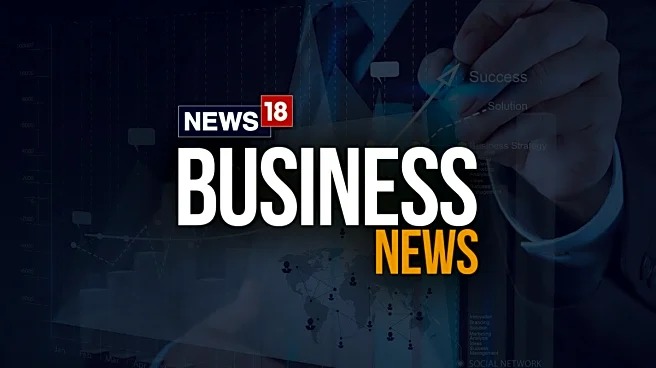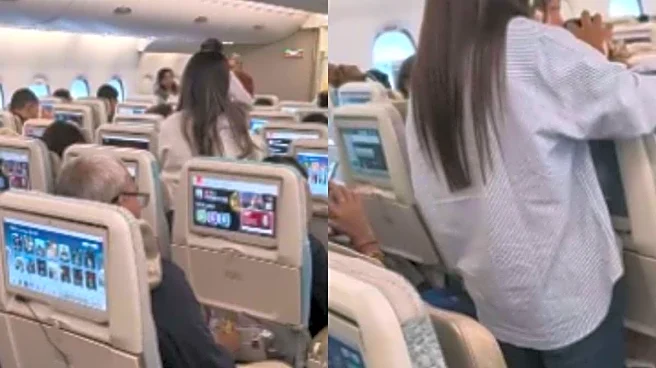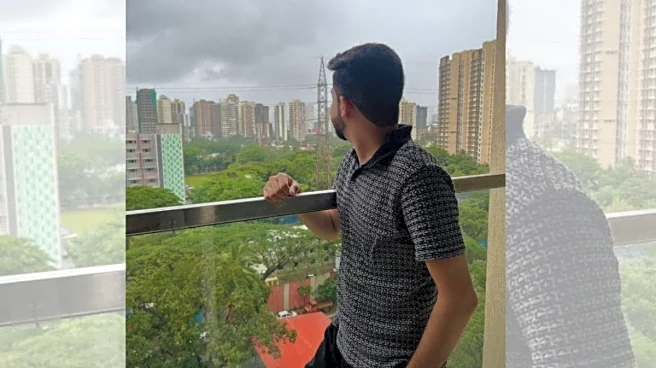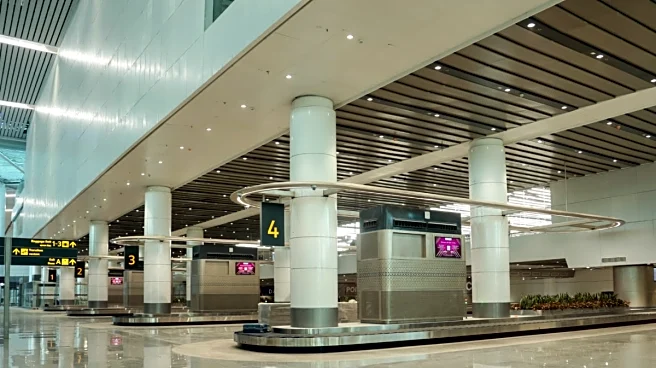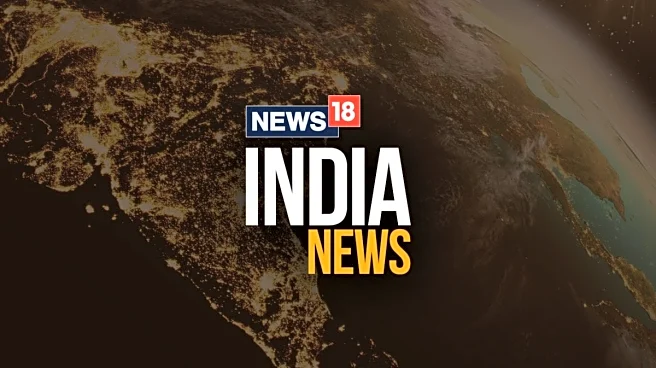What is the story about?
India’s fintech ecosystem has reached a stage where payments are no longer the end goal but the starting point for the next phase of financial services growth, said Sohini Rajola, ED of Growth at NPCI, in a panel discussion with CNBC-TV18 at the Banking Transformation Summit.
“We are at a banking transformation summit, and UPI has become the brand. It is not just the world’s largest real-time payment system; it is also the most inclusive real-time payment system,” Rajola said, adding that NPCI has built the rails while innovation has come from the broader ecosystem of banks, fintechs, and third-party players.
She noted that UPI transactions have scaled from nothing nine years ago to more than 700 million a day today, and that shift has laid the foundation for the “next revolution—the credit revolution.”
According to Rajola, credit card enablement on UPI has already expanded acceptance points from 10 million to 25 million. “The next level will be about discoverability and delivery of credit… imagine it being available at the point of sale, at a QR code, at the moment of truth for the customer,” she said.
Responding to how this transformation impacts card networks, Rishi Chhabra, Country Manager of India at Visa, stressed that cards continue to remain relevant. “Cards are not going away. The last RBI data shows card payments grew 15% year-on-year, even as recently as May-June this year,” he said.
Chhabra highlighted Visa’s focus on security and innovation, pointing to the company’s work with RBI on tokenisation. “Today, we have over 400 million card credentials tokenised. That’s the infrastructure for all online payments,” he said, adding that safety, convenience and global acceptance remain Visa’s moat.
Even as India handles nearly 20 billion UPI transactions a month—almost eight lakh every second—the debate is shifting from scaling up payments to building profitable, sustainable models. Rajola summed it up by saying: “Payments are the foundation, but credit is the next revolution.”
Below is the excerpt of the discussion.
Q: Sohini, let me start by asking you something I’ve heard from quite a few fintech founders. The real innovation when it comes to payments hasn’t come from the players in the industry—it’s been done by NPCI. Do you at some point worry that the dominance NPCI has in the payments market could be crowding out some private innovation? Some people do say this behind closed doors.
Rajola: Let’s step back a little bit. It was extremely gratifying—I would almost feel a little smug—to listen to the number of times UPI was mentioned just today. We are at a banking transformation summit, and UPI has become the brand. NPCI has brought UPI and a lot of other solutions, and rightly so, it has transformed the way India transacts. It is not just the world’s largest real-time payment system; it is also the most inclusive real-time payment system. There are more than 60–65 countries that have real-time payment systems. We weren’t the first, but we’ve become the largest. And I don’t think that’s because NPCI alone came out with innovation. It’s because of the entire ecosystem—the regulatory frameworks, the technology, the open standards. The innovation has actually been built on top of that by banks, fintechs, and third-party application providers. We provide the rails, but the real customer experience—and the reason it grew from nothing nine years ago to more than 700 million transactions a day today—is because of the layer built on top.
Q: What is the next big innovation? You’ve done UPI, FASTag, Bharat Bill Payment System, and countless other things. What next will really change the way credit is seen in India?
Rajola: When you look at the entire pyramid of financial services, payments are the foundation. But the fact that we’ve moved so much—years ago, when I used to run cards and payments at a bank, every presentation said only 3% of India’s PCE was digital, the rest was cash. That’s been turned on its head. Today, the majority of transactions happen digitally. What that does is build the foundation for the next revolution—the credit revolution. We heard the RBI Deputy Governor speak about all the frameworks, regulations, and enabling structures coming in. Innovation is not just an event; it will be built on top of UPI.
A few years ago, when we launched credit cards on UPI, the impact was huge. From about 10 million point-of-sale terminals, today credit cards are used at more than 25 million points of sale, thanks to UPI enablement. That’s a huge jump. If credit cards were only issued for traditional acceptance frameworks, you weren’t really moving the needle. But when we enabled credit cards on UPI, it unlocked a huge jump.
There are about 111 million credit cards in the country today. It’s one form of credit, but the next level will be about discoverability and delivery of credit. When banks or fintechs are able to use AI and frameworks to decide on credit, imagine it being discoverable at the point of sale, at a QR code, at the moment of truth for the customer. That’s the direction we are headed in.
Q: Rishi, what do you make of these innovations NPCI is coming up with? With UPI payments virtually free, as a card company how do you feel about your moat? I know you’ll say you’re not just plastic, you’re a technology company, but tell us: how has zero-MDR UPI and credit on UPI impacted your business and profitability?
Chhabra: We applaud everything that NPCI and UPI have done. It’s been fantastic. If you think about digital inclusion, everything Sohini spoke about—the touchpoints, the reach—it’s been great for India and Bharat.
Visa has been around globally for six decades, and in India for more than four decades. There’s a reason for that—the security, safety, and convenience Visa provides to cardholders globally still stands true. Whether it’s at a point-of-sale purchase, an online transaction, a cross-border purchase, or experiences and benefits for cardholders, Visa provides that today.
We are extremely committed to India and to innovation—whether that’s in agentic AI, for fraud detection, or ensuring safety and security for consumers. Think about tokenisation—we worked with the RBI on tokenising card credentials online. Today, we have over 400 million card credentials tokenised. That’s the infrastructure for all online payments.
Between consumer experience, fraud detection, and making sure everything the consumer touches is safe and secure—that’s the moat we believe in, and we are here for.
Q: So, you don’t think cards are going anywhere? Penetration is low, but are they being replaced?
Chhabra: No, not at all. The last RBI data shows card payments grew 15% year-on-year, even as recently as May-June this year. Cards are not going away. We still have more than a billion debit cards and over 100 million credit cards in the market. Consumers have choices today that they didn’t have a decade ago.
How I want to spend online, at a retailer, or internationally when I travel for a concert—the choice is mine. For example, during Coldplay’s concert in Abu Dhabi earlier this year, we saw a big spike in Visa usage. As recently as this weekend, there was a Vishal-Shekhar concert in Mumbai and Delhi, and we saw spending patterns rise there too. Consumers want choice and convenience. As long as it’s safe and secure, cards will remain a strong part of digital inclusion. Cards are not going away anywhere.
Watch accompanying video for entire discussion.
“We are at a banking transformation summit, and UPI has become the brand. It is not just the world’s largest real-time payment system; it is also the most inclusive real-time payment system,” Rajola said, adding that NPCI has built the rails while innovation has come from the broader ecosystem of banks, fintechs, and third-party players.
She noted that UPI transactions have scaled from nothing nine years ago to more than 700 million a day today, and that shift has laid the foundation for the “next revolution—the credit revolution.”
According to Rajola, credit card enablement on UPI has already expanded acceptance points from 10 million to 25 million. “The next level will be about discoverability and delivery of credit… imagine it being available at the point of sale, at a QR code, at the moment of truth for the customer,” she said.
Responding to how this transformation impacts card networks, Rishi Chhabra, Country Manager of India at Visa, stressed that cards continue to remain relevant. “Cards are not going away. The last RBI data shows card payments grew 15% year-on-year, even as recently as May-June this year,” he said.
Chhabra highlighted Visa’s focus on security and innovation, pointing to the company’s work with RBI on tokenisation. “Today, we have over 400 million card credentials tokenised. That’s the infrastructure for all online payments,” he said, adding that safety, convenience and global acceptance remain Visa’s moat.
Even as India handles nearly 20 billion UPI transactions a month—almost eight lakh every second—the debate is shifting from scaling up payments to building profitable, sustainable models. Rajola summed it up by saying: “Payments are the foundation, but credit is the next revolution.”
Below is the excerpt of the discussion.
Q: Sohini, let me start by asking you something I’ve heard from quite a few fintech founders. The real innovation when it comes to payments hasn’t come from the players in the industry—it’s been done by NPCI. Do you at some point worry that the dominance NPCI has in the payments market could be crowding out some private innovation? Some people do say this behind closed doors.
Rajola: Let’s step back a little bit. It was extremely gratifying—I would almost feel a little smug—to listen to the number of times UPI was mentioned just today. We are at a banking transformation summit, and UPI has become the brand. NPCI has brought UPI and a lot of other solutions, and rightly so, it has transformed the way India transacts. It is not just the world’s largest real-time payment system; it is also the most inclusive real-time payment system. There are more than 60–65 countries that have real-time payment systems. We weren’t the first, but we’ve become the largest. And I don’t think that’s because NPCI alone came out with innovation. It’s because of the entire ecosystem—the regulatory frameworks, the technology, the open standards. The innovation has actually been built on top of that by banks, fintechs, and third-party application providers. We provide the rails, but the real customer experience—and the reason it grew from nothing nine years ago to more than 700 million transactions a day today—is because of the layer built on top.
Q: What is the next big innovation? You’ve done UPI, FASTag, Bharat Bill Payment System, and countless other things. What next will really change the way credit is seen in India?
Rajola: When you look at the entire pyramid of financial services, payments are the foundation. But the fact that we’ve moved so much—years ago, when I used to run cards and payments at a bank, every presentation said only 3% of India’s PCE was digital, the rest was cash. That’s been turned on its head. Today, the majority of transactions happen digitally. What that does is build the foundation for the next revolution—the credit revolution. We heard the RBI Deputy Governor speak about all the frameworks, regulations, and enabling structures coming in. Innovation is not just an event; it will be built on top of UPI.
A few years ago, when we launched credit cards on UPI, the impact was huge. From about 10 million point-of-sale terminals, today credit cards are used at more than 25 million points of sale, thanks to UPI enablement. That’s a huge jump. If credit cards were only issued for traditional acceptance frameworks, you weren’t really moving the needle. But when we enabled credit cards on UPI, it unlocked a huge jump.
There are about 111 million credit cards in the country today. It’s one form of credit, but the next level will be about discoverability and delivery of credit. When banks or fintechs are able to use AI and frameworks to decide on credit, imagine it being discoverable at the point of sale, at a QR code, at the moment of truth for the customer. That’s the direction we are headed in.
Q: Rishi, what do you make of these innovations NPCI is coming up with? With UPI payments virtually free, as a card company how do you feel about your moat? I know you’ll say you’re not just plastic, you’re a technology company, but tell us: how has zero-MDR UPI and credit on UPI impacted your business and profitability?
Chhabra: We applaud everything that NPCI and UPI have done. It’s been fantastic. If you think about digital inclusion, everything Sohini spoke about—the touchpoints, the reach—it’s been great for India and Bharat.
Visa has been around globally for six decades, and in India for more than four decades. There’s a reason for that—the security, safety, and convenience Visa provides to cardholders globally still stands true. Whether it’s at a point-of-sale purchase, an online transaction, a cross-border purchase, or experiences and benefits for cardholders, Visa provides that today.
We are extremely committed to India and to innovation—whether that’s in agentic AI, for fraud detection, or ensuring safety and security for consumers. Think about tokenisation—we worked with the RBI on tokenising card credentials online. Today, we have over 400 million card credentials tokenised. That’s the infrastructure for all online payments.
Between consumer experience, fraud detection, and making sure everything the consumer touches is safe and secure—that’s the moat we believe in, and we are here for.
Q: So, you don’t think cards are going anywhere? Penetration is low, but are they being replaced?
Chhabra: No, not at all. The last RBI data shows card payments grew 15% year-on-year, even as recently as May-June this year. Cards are not going away. We still have more than a billion debit cards and over 100 million credit cards in the market. Consumers have choices today that they didn’t have a decade ago.
How I want to spend online, at a retailer, or internationally when I travel for a concert—the choice is mine. For example, during Coldplay’s concert in Abu Dhabi earlier this year, we saw a big spike in Visa usage. As recently as this weekend, there was a Vishal-Shekhar concert in Mumbai and Delhi, and we saw spending patterns rise there too. Consumers want choice and convenience. As long as it’s safe and secure, cards will remain a strong part of digital inclusion. Cards are not going away anywhere.
Watch accompanying video for entire discussion.
Do you find this article useful?
/images/ppid_59c68470-image-175864006009396505.webp)

/images/ppid_a911dc6a-image-175842522336849757.webp)






